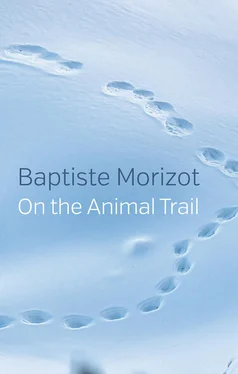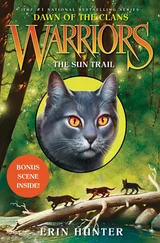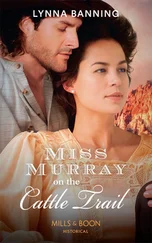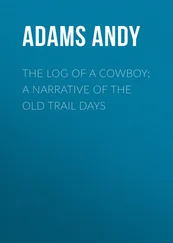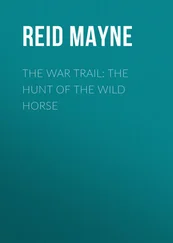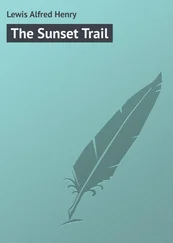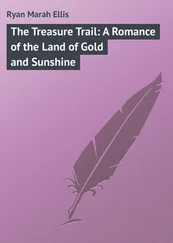We would need to become coureurs des bois of the same order, but this time dealing with different ‘savages’: to enforest ourselves is, as it were, an attempt to winter ‘over there’, to see things from inside the point of view of wild animals, of the trees that communicate, the living soils that labour, the plants that are akin to the permaculture vegetable garden. To enforest ourselves means to see through their eyes and become aware of their habits and customs, their irreducible perspectives on the cosmos, to invent better relationships with them. It is truly a question of diplomacy, since it involves a variegated people whose languages and customs are poorly understood, a people that is not necessarily inclined to communicate, although the conditions are there simply because we share a common ancestry (we descend from the same ancestor). To ‘enforest ourselves’, we will need an acrobatics of the intelligence and the imagination, and an indefinite, delicate suspense, as we try to translate what those plants and animals do, what they communicate and how they live.
The anthropologist Claude Lévi-Strauss argues in a famous passage that our inability to communicate with the other species with which we share the earth is a tragic situation and a curse. When asked what a myth is, he replied:
If you were to ask an American Indian, there would be a good chance that he would answer: a story of the time when men and animals were not yet distinct. This definition seems very profound to me. For, despite the clouds of ink projected by the Judeo-Christian tradition to mask it, no situation seems more tragic, more offensive to the heart and the spirit, than that of a humanity which coexists with other living species on a land which they enjoy in common, and with which humanity cannot communicate. We can understand why the myths refuse to view this defect of creation as original; they see in its appearance the inaugural event of the human condition and not of the latter’s infirmity. 7
However, this ‘defect of creation’ is just one point of view: communication is possible, even if it is difficult, always subject to creative misunderstanding, always surrounded by mystery. It has never ceased to be so, except for a civilization that has disfigured other living beings and turned them into machines, forms of matter governed by instincts or an absolute otherness governed by relations of force.
If, however, Lévi-Strauss’s definition of myth is the correct one, then tracking appears, enigmatically, as one possible way among others of experiencing and accessing the time of myth itself.
This overlap between animal and human, this metamorphic experience between oneself and the other can be found everywhere in tracking. To understand the animal’s trajectory, you have to put yourself in its place, see through its eyes. You have to find the key points, the convergences between ways of being alive, by following the animal in its tracks. You have to find the (even more) vital problematics in yourself. In order to find the wolf, you have to probe the problematics you share with the wolf, inside of yourself: you have to try and move outside the merely human way of living so that you can coincide with something else. You have to move along a path, for example. Certain animal paths are places where the human and the animal are blurred, because it is not possible at first glance to decide who dug them. A path is often shared, drawn and carved out by several species, including humans, and it is with the same wary eyes, and for the same reasons, that they choose them. The deer’s trails are open paths; those of the wild boar become difficult to follow when the shrub cover becomes denser, because they are low down; those of the chamois are often too vertical, as this creature lives like a bird in three dimensions, and the verticals are just as natural as the horizontals; those of the wolf are optimal routes to investigate.
Large animals form a community with similar reasons for moving about, and an analogous way of changing place; they embark on the same search for the cleared path, the best possible passage, the stream where they can quench their thirst or just revel in the joy of the living water, the sunlight in which they can warm their skins after the cold valley, the coign of vantage over the valley which allows them to orient themselves a little and see what’s coming, the shade in which they can cool off at midday, the detour round the peak. A wolf’s trail always takes the path of least resistance. And that’s why a human being will naturally follow an animal path (if the animal has a certain corpulence), and that’s why, in it and through this path, there is something like a momentary blurring of the distinction between man and animal which proves how close they are, in the vital, lived experience of their pacing along the same trail. They see it with the same eyes; they are mammals that open up the path with the same aims and the same ways of thinking and deciding. Despite the differences, despite the unapproachable strangeness of other forms of life, there is at certain points something like a community of vital issues. This is what becomes evident in forest tracking when, for example, we discover a lost track because we have guessed that it was towards that babbling stream over there that the animal went when the temperature soared, or when we know in advance that, on this pass, the wolf, imbued by the sovereign desire to make its territory known to everyone, will have left a mark, which indeed we find right there. In passing, we unwittingly experience the time of myth: a time when human and non-human animals are no longer clearly distinguishable.
Like any good intermediary, it is to be hoped that a diplomat who has gone to enforest himself among other living things, even for a day or two, will comes back transformed, made serenely wild, far from the phantasmal wildness we attribute to Others. Whoever lets himself be enforested by them should, we hope, come back a little different from his werewolf trip, turned into a half-blood, straddling two worlds. Neither degraded nor purified, just other , and able to travel a little between worlds, and to make them communicate, so that he can work to bring about a common world.
The earth, that is sufficient,I do not want the constellations any nearer,I know they are very well where they are,I know they suffice for those who belong to them. 8
1 1. I have translated Morizot’s French quite literally, even though in English we would not refer to ‘going into nature’, since he is making a philosophical point about nature as ‘other’ to culture. (Translator’s note.)
2 2. Philippe Descola, Beyond Nature and Culture, translated by Janet Lloyd (Chicago, IL: University of Chicago Press, 2013).
3 3. Descola, Beyond Nature and Culture (translated from the French).
4 4. Gilles Havard, Histoire des coureurs de bois, Amérique du Nord 1600–1840 (Paris: Les Indes savantes, 2016). A coureur des bois was a French-Canadian trader, usually in fur, who worked closely with the indigenous people of North America, mainly in the seventeenth century. (Translator’s note.)
5 5. Walt Whitman, ‘The Song of the Open Road’, in Leaves of Grass (1855).
6 6. Emanuele Coccia has written eloquently on this phenomenon in La Vie des Plantes. Une métaphysique du mélange (Paris: Rivages, 2016).
7 7. Claude Lévi-Strauss and Didier Eribon, Conversations with Claude Lévi-Strauss (Chicago, IL: University of Chicago Press, 1991), p. 193.
8 8. Walt Whitman, ‘The Song of the Open Road,’ in Leaves of Grass (1855).
Конец ознакомительного фрагмента.
Текст предоставлен ООО «ЛитРес».
Читать дальше
